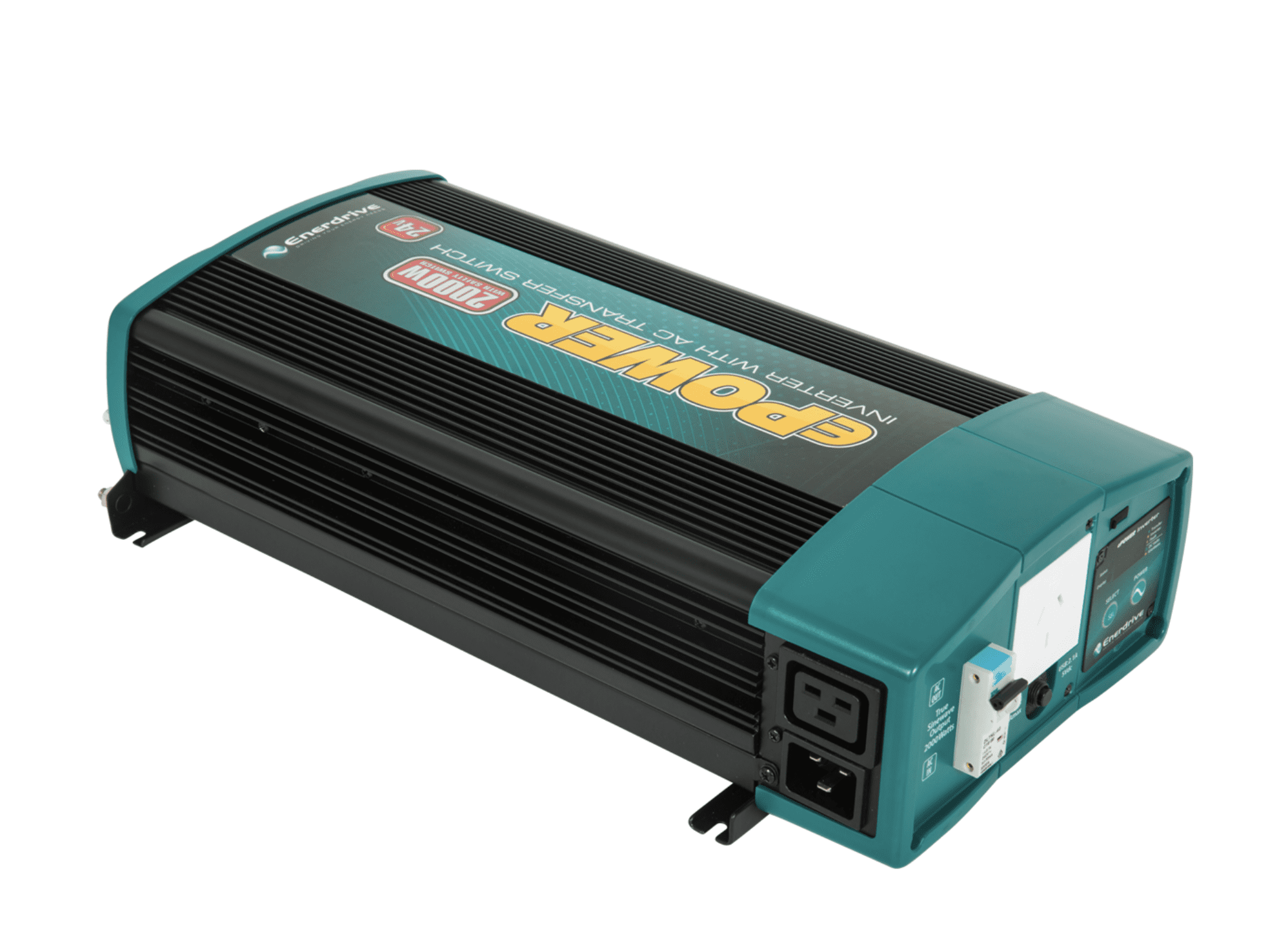Note: This article contains an affiliate link to Outback Equipment. If you click through and make a purchase, we earn a small commission at no extra cost to you.
Choosing the correct inverter fuse size for your pure sine wave inverter should be a simple process. But it’s not.
Suppliers of inverters have contradictory information regarding fuse sizing. One might say you need a 100 Amp fuse, another will say 125 Amps, while others have no information at all. You’re on your own.
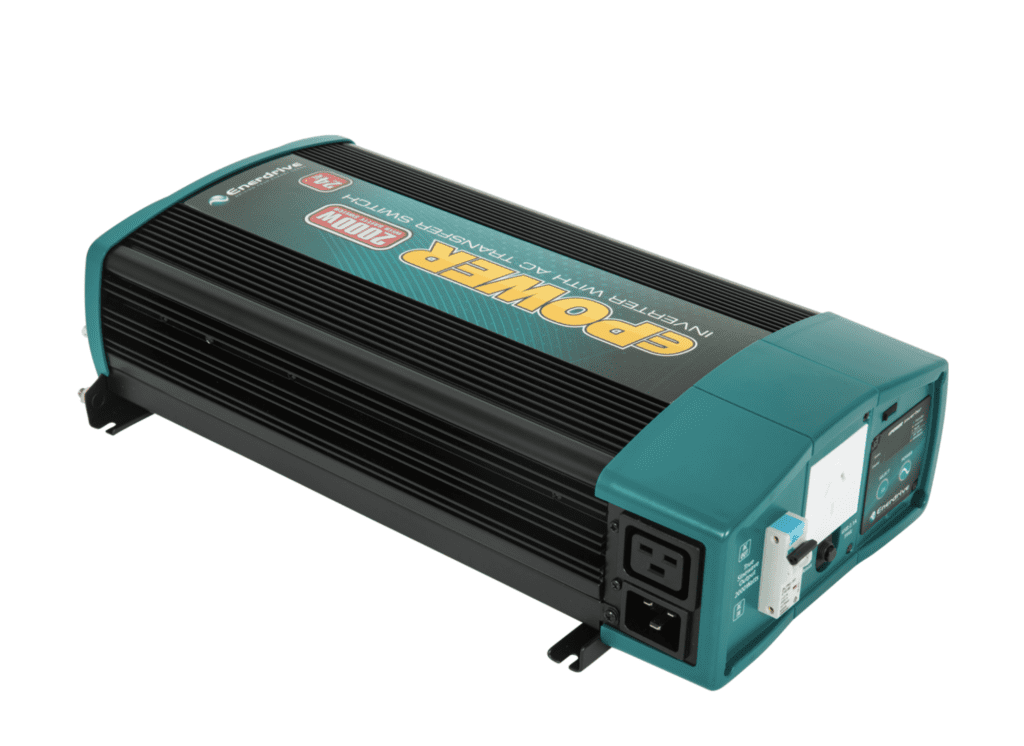
We decided to do something about this.
To make the process simple, we created a simple Inverter Fuse Size Calculator. Simply enter a couple of details and it’ll figure out the correct fuse size.
Inverters are a bit of a special case when it comes to selecting a fuse for the input cabling. It can be easy to tie yourself in knots.
So we’ve kept it as simple as possible. Walk through our example with us and hopefully it’ll all start to make more sense! Then use our Inverter Fuse Size Calculator to get the right sized fuse for your inverter.
Keeping It Simple
There’s only one rule to remember when choosing the correct inverter fuse size.
Power In = Power Out + Internal Losses
Voltage in or out doesn’t matter. An inverter uses power, simple as that. Power’s measured in Watts and conveniently, inverters are sized in Watts.
It’s at this point where those of you who know a lot about this topic will be yelling angrily at the screen. Why?
Because a lot happens when you convert DC to AC. And AC circuits are very different to DC circuits. Let’s be honest… it’s complex. We could go down a massive rabbit hole here and talk about volt-amperes vs Watts, reactance, and on and on and on. But we’ll stick with the basics here.
For the sake of sizing a fuse on the DC side of an inverter, we can safely cheat a little.
What’s The Inverter’s Real Rating?
Say we have a 1,000W inverter and a 12V deep cycle battery. Let’s figure out what size fuse we need.
It’s important to mention this 1,000W rating is the output rating. When reputable brands quote an inverter rating, they mean “the maximum continuous output power rating”.
Why do I mention this? Because there’s a lot of dodgy inverters out there with dodgy ratings. I Googled “1000w inverters” and the first one was a cheap brand advertised as a 1,000W pure sine wave inverter.
But its specs show it has a 900W continuous power rating, with a 1,000W peak power rating. That’s deceptive and dishonest.
Back to our example…
Inverter Fuse Sizing – An Example
Power is Voltage multiplied by Current or P=VI, where
P = Power in Watts
V = Voltage in Volts
I = Current in Amps
Remember we said power is power, regardless of whether it’s AC or DC? Well, let’s go with this (simplification) for now. Then if we know the P (1,000 Watts) and we know the V (12 Volts), we can figure out the I (current in Amps).
Ummm, not quite. An inverter is not 100% efficient. It uses power for internal functions, loses energy through heat loss, and so on. And how efficiently it converts power depends on how hard it’s working.
For example, a 1,000W inverter with a 700W load will operate more efficiently than when a 100W load is plugged in. And different types of loads affect the efficiency, like heaters (think electric heater with an element) vs electric motors (think hair dryer or fan).
It’s fair to use a figure of 80% efficiency to cover most situations. To compensate for this, we need to increase the input power to match.
At 100% efficiency:
Input current, I = P/V = 1,000/12 = 83.3 Amps.
Then allow for 80% efficiency:
Input current, I = 83.3/0.80 = 104 Amps.
Now it’s always a smart idea to give yourself a buffer on the input side. Sometimes when a device switches on, it’ll demand a brief spike in power. A factor of around 1.2 will give you this buffer.
Adding in the 1.2 buffer:
Input current, I = 104 x 1.2 = 125 Amps.
As you can see, we started with 83 Amps @ 100% efficiency and ended up with 125 Amps. That’s quite a difference.
This is the minimum value you should use to size both the DC input wiring. If you size the wiring at 125 Amps, then it will easily handle the load.
Next, use our Cable Sizing Calculator to size the cable.
Choosing The Right Cable And Fuse
If the calculated cable size is between two available cable sizes, always choose the larger cable. This avoids potential overheating inside the cable and large voltage drops.
One important point.
The fuse exists primarily to protect the cable, not the inverter. Yes, it will protect the inverter as well. But the number one job of a fuse is to protect the cable. The fuse must therefore be located as close to the battery as possible.
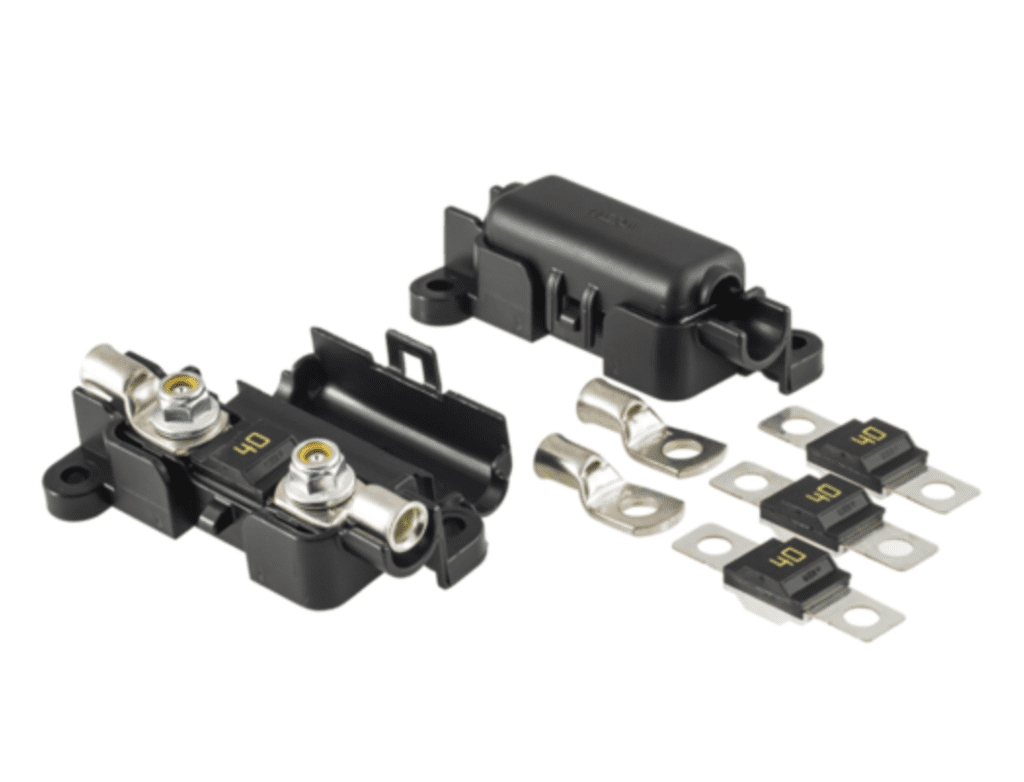
If you size the fuse correctly (in this case at 125 Amps) and you size the cable with our Cable Sizing Calculator, then you know the inverter will have a healthy power supply.
More importantly, you can be confident the input cable won’t overheat and potentially cause a fire.
If the calculated fuse size is between two available fuse sizes, you’re always safer choosing the smaller fuse. The last thing you want is for the fuse to be rated higher than the cable. That’s how cable fires start.
Why choose the smaller fuse?
Well, it’s okay to go around 20% higher than the inverter’s maximum current draw. Certain devices draw a lot more current for an instant when they first switch on. But we’ve already allowed for this in our Inverter Fuse Size Calculator (and in the calcs above).
Use some discretion here. Say your input current was 290 Amps and the nearest fuse sizes are 275 and 300 Amps. In this case, you’ll go with the 300 Amp fuse.
Inverter Fuse Size Calculator
We’ve taken the same information and assumptions used in our example above. Then we rolled them into an easy-to-use Inverter Fuse Size Calculator.
You simply enter the inverter continuous output power rating and DC supply voltage. It’ll give you the required input current. Use this to size both the fuse and the supply cabling.
Inverter Fuse Size Calculator
Important: If the supplier specifies a higher rating than the one calculated above, use the supplier’s rating. Some suppliers (like REDARC Electronics for example) quote more conservative values than what’s calculated above.
Once you have the input current, use our Cable Sizing Calculator to correctly size the input cabling.
If you need more information about the best fuses to use, available fuse sizes, and so on have a look through our FAQs below.
FAQs – Common Questions About Inverters And Their Wiring
If you have a question we haven’t answered here, please let us know in the Comments below. Then we’ll add it to the FAQs.
A pure sine wave inverter converts DC current into high quality AC current. The output is the shape of a sine wave, hence the name.
Pure sine wave inverters produce a clean AC output and are highly efficient. However, they are expensive compared to modified sine wave inverters.
Related Questions
– What are the advantages of a pure sine wave inverter?
– What are the disadvantages of a pure sine wave inverter?
The output of a modified sine wave inverter is not as smooth as that of a pure sine wave inverter. It can damage sensitive electronic equipment like computers and cause excessive heat build-up in electric motors.
It’s a cost-effective choice if you’re only running lights or other equipment that’s not sensitive to power fluctuations.
A modified sine wave inverter is cheap, however it can damage electronic equipment and is less efficient. If you’re planning to charge phones, tablets, and laptops then a pure sine wave inverter is definitely the best option.
Related Questions
– What are the advantages of a modified sine wave inverter?
– What are the disadvantages of a modified sine wave inverter?
If you’re installing a new electrical device, first check the User Manual. It should have a recommended fuse size.
If not and you’re sizing a fuse for inverter input cabling, use our Inverter Fuse Size Calculator above.
And if you’re sizing a fuse for another 12V application, you need to know the maximum current (Amps). Then you can use our Cable Sizing Calculator to correctly size the cable and select a fuse to suit.
Related Questions
– How big of a fuse do I need with 12V?
– How do I choose a 12V fuse?
– How do you calculate what size fuse you need?
Up to about 20 Amps, a blade fuse is okay. Above 20 Amps use a link type fuse, which are bolted down at each end.
Blade fuses are not suitable for currents above 20 Amps in a vehicle. Vibrations, moisture and dust cause the metal contacts to deteriorate, increasing resistance and potentially leading to fuse holders melting.
Further, the cross-sectional area of a blade fuse’s prongs is much less than the wire it’s protecting. Worse still, the fuse holder contacts are weak and have a tiny contact area, resulting in loose or poor contacts. All theses factors generate heat due to resistance.
A bolt-down midi, maxi or mega fuse is the best option. You get a solid connection and the fuse will have a cross-sectional area close to that of the cable it’s protecting.
A blade fuse has two thin prongs which plug into matching sockets. The fusible link is inside a moulded plastic body. Blade fuses are cheap and readily available in small sizes.
But the prongs and matching sockets form a poor connection, making them prone to corrosion and over-heating.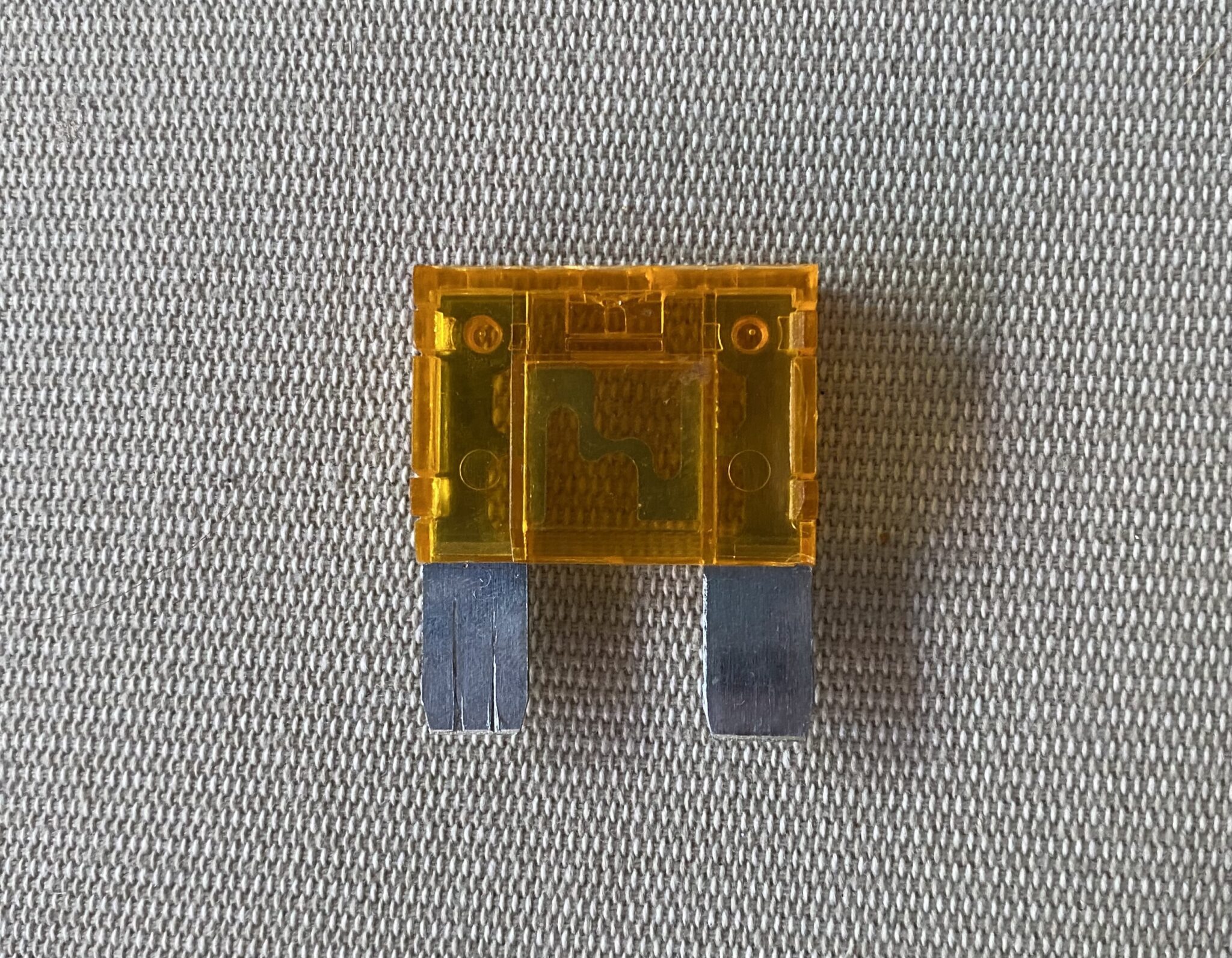
A midi fuse is a link fuse. It’s flat and provides a link between two terminals.
A midi fuse bolts solidly between two large terminals for a sturdy connection. It has a similar cross-sectional area to the cable it’s protecting, minimising heat build-up.
Midi fuses aren’t always available in remote locations, so it pays to carry spares.
You can also get maxi and mega fuses. They are physically larger with larger bolt holes and generally meant for high current applications.
Confusingly, large blade fuses are also termed maxi fuses. Large blade fuses are completely unsuitable for carrying currents over about 20 Amps. The heat build-up, tiny cross-sectional area of the prongs, and poor connection to the matching fuse holder make them prone to over-heating, then potentially starting a fire.
Related Questions
– What is a maxi fuse?
– What is a mega fuse?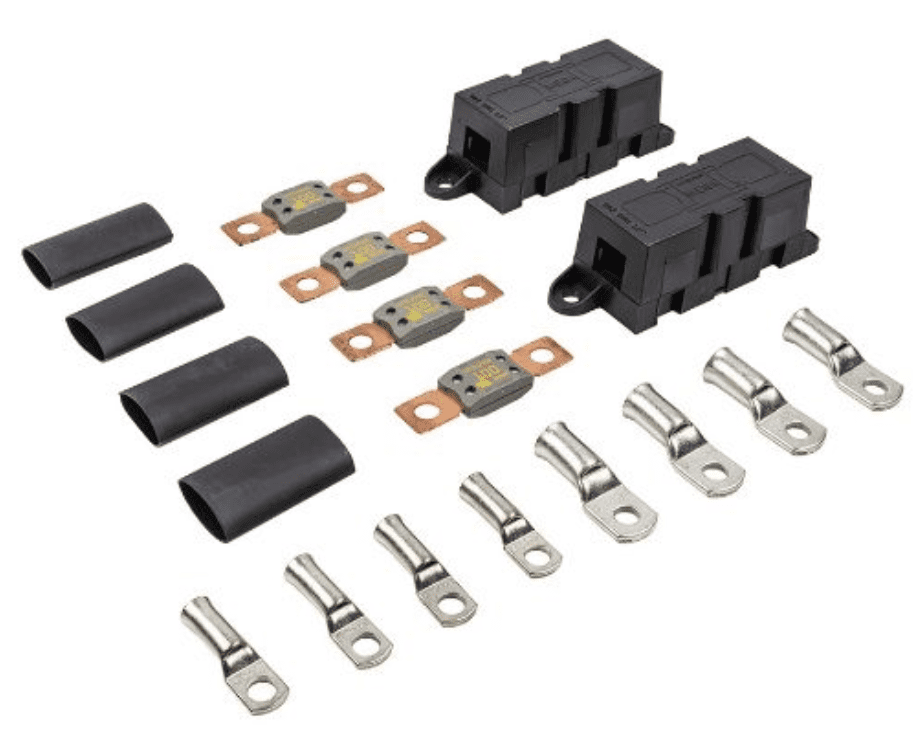
Related Resources: Download Excel versions of our Cable Calculators from our Free Resources page
+
a bonus Voltage Drop Calculator.
Go here for more How-To Guides and tips.
Any questions or comments? Go to the Comments below or join us on Pinterest, Facebook or YouTube.
Any errors or omissions are mine alone.

